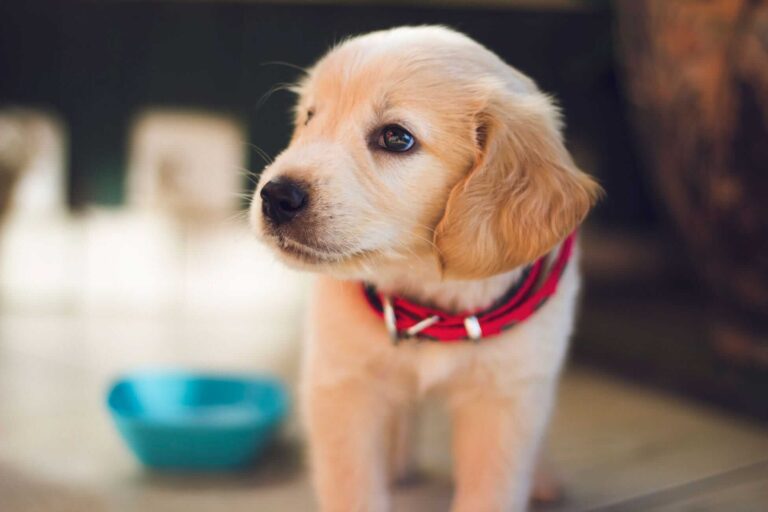To get your dog to drink more water, try adding some low-sodium chicken or beef broth to their water bowl. This can make the water more enticing for your dog, encouraging them to drink more.
Ensure the broth is cooled down before offering it to your dog to avoid any burns. Also, consider investing in a pet water fountain, as some dogs prefer running water to still water, which can encourage them to drink more.
Additionally, keeping multiple water bowls around your home in different locations can make it more convenient for your dog to access water, therefore increasing their water intake. Making these simple changes can help ensure your dog stays properly hydrated and healthy.
Understanding Canine Hydration Needs
Understanding canine hydration needs is crucial for maintaining your dog’s health. Water plays a vital role in a dog’s overall well-being, supporting various bodily functions such as digestion, circulation, and temperature regulation. Signs of dehydration in dogs include lethargy, sunken eyes, and dry gums. Small dogs typically require about 1 cup of water per day, while larger breeds may need closer to 3-4 cups. Providing easy access to fresh, clean water and incorporating moisture-rich foods into their diet can help ensure your dog meets their daily hydration needs.
How To Get My Dog To Drink More Water: 5 Effective Tips
Start by assessing how much water your dog currently drinks on a daily basis. Pay attention to signs of dehydration such as dry nose, sunken eyes, or lethargy. Keeping track of your dog’s water intake will help you monitor any improvements.
Diet plays a crucial role in your dog’s hydration. Ensure that your pet is consuming a balanced diet that includes moist foods and high-quality dog food. Incorporating wet dog food into their diet can also contribute to their overall water intake.
Making Water Appealing
Dogs can be encouraged to drink more water by ensuring that their water is always fresh and clean. This can be achieved by regularly changing the water in their bowl and keeping the bowl clean to avoid any debris or bacteria. Placing the water bowl in different areas of the house can also make it more appealing to dogs, as well as providing variety in the water sources available to them. Some dogs may prefer drinking from a water fountain, while others may prefer a traditional water bowl. By offering different options, dogs can be enticed to drink more water, promoting their hydration and overall health.
Encouraging Drinking Through Activities
One effective way to encourage your dog to drink more water is by incorporating water games. Playing fetch in a shallow pool or sprinkler can entice your dog to drink while having fun. Additionally, using wet foods and broths in your dog’s diet can help increase their water intake. Mixing these into their meals can keep them hydrated and interested in their food. Finally, ensuring your dog stays hydrated during and after exercise is crucial. Always have fresh water available during physical activities and encourage them to drink afterwards to replenish lost fluids.
Training And Positive Reinforcement
Establishing a water drinking routine: Dogs thrive on routine, so establish set times throughout the day for your dog to drink water. This can be after a walk, before mealtime, and before bedtime to encourage regular hydration.
Rewarding your dog for drinking water: Use positive reinforcement such as treats or praise to encourage your dog to drink water. This will create a positive association with drinking and reinforce the behavior.
Monitoring water intake: Pay attention to your dog’s water intake and behavior. Changes in drinking habits or signs of dehydration should be monitored closely. Consulting a vet is advisable if you notice any significant changes in your dog’s water consumption or behavior.
:max_bytes(150000):strip_icc()/encourage-cat-drink-more-water-0622-460ba56b3c624660aac233796a0b3f9e.jpg)
Credit: www.marthastewart.com
Health Monitoring And Water
Ensuring adequate hydration for your dog is crucial for maintaining their overall health. Regularly check for signs of dehydration, such as dry gums and skin, and monitor their urination frequency and urine color. Understanding the normal water intake for your dog’s size and activity level is essential in recognizing when increased water consumption may be necessary. Health issues such as kidney disease, diabetes, and gastrointestinal problems can significantly impact your dog’s water intake. Be mindful of any changes in their water consumption, as this could indicate an underlying health concern. By staying vigilant and proactive in monitoring your dog’s water intake, you can help ensure their well-being and longevity.
Frequently Asked Questions On How To Get My Dog To Drink More Water
How Can I Encourage My Dog To Drink More Water?
Encourage your dog to drink more water by adding flavorless broth to their water, providing a flowing water source, placing multiple water bowls around the house, and keeping the water fresh. You can also try using a water fountain designed specifically for pets.
What Are The Signs Of Dehydration In Dogs?
Watch out for symptoms such as dry nose and gums, sunken eyes, lethargy, loss of skin elasticity, and excessive panting. If you notice any of these signs, encourage your dog to drink more water and consult with a veterinarian if the symptoms persist.
How Much Water Should My Dog Drink Per Day?
The general guideline is that dogs should drink about 1 ounce of water per pound of body weight per day. However, this can vary based on factors such as activity level, diet, and environmental conditions. Always ensure that your dog has access to clean and fresh water.
Conclusion
Encouraging your dog to drink more water is crucial for their health and well-being. By making small changes, such as providing clean and fresh water at all times, using a water fountain, or adding water to their food, you can help ensure your pet stays hydrated.
Remember, staying proactive and observant of your dog’s water intake is essential for their overall health. Keep implementing these strategies, and you’ll see a positive difference in your dog’s hydration levels.



